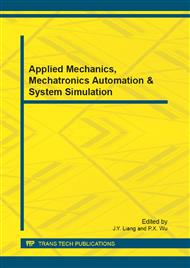p.824
p.828
p.833
p.839
p.843
p.848
p.852
p.856
p.861
Time-Dependent Ginzburg-Landau Equation in Car Following Model Considering the Traffic Interruption Probability
Abstract:
This paper focuses on a car-following model which involves the effects of traffic interruption probability. The stability condition of the model is obtained through the linear stability analysis. The time-dependent Ginzburg-Landau (TDGL) equation is derived by the reductive perturbation method. In addition, the coexisting curve and the spinodal line are obtained by the first and second derivatives of the thermodynamic potential. The analytical results show that the traffic interruption probability indeed has an influence on driving behaviour.
Info:
Periodical:
Pages:
843-847
Citation:
Online since:
September 2012
Authors:
Price:
Сopyright:
© 2012 Trans Tech Publications Ltd. All Rights Reserved
Share:
Citation:


